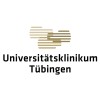
18FDG-PET in Patients With Melanoma or NSCLC Treated With Immunotherapy
MelanomaNSCLC3 moreStudy the EFS and OS according to 18FDG PET in patients with melanoma or non small cell lung cancer treated by immunotherapy.

A Feasibility Study to Identify T-cell Responses to Neo-epitopes in Tumor Invaded Lymph Nodes (NeoEpitope)...
Breast CancerCutaneous MelanomaFeasibility study for a method allowing identification of tumor mutated epitopes in patients with breast cancer or cutaneous melanoma, and quantification of CD8+ T cells specific for these tumor neo-antigens in their lymph nodes

PAN-EU Utilization, Effectiveness and Safety of Ipilimumab Administered in EAP Patients With Advanced...
MelanomaObservational study to evaluate the effectiveness and safety of ipilimumab, administered during the European expanded access programme (EAP) in pretreated patients with advanced (unresectable or metastatic) melanoma.

Therapeutic Drug Monitoring of BRAF-mutated Advanced Melanoma
Melanoma (Skin)BRAF V600-mutant metastatic melanoma are commonly treated using a combination of anti-BRAF and anti-MEK tyrosine kinase inhibitors (TKIs). The OPTIMEL trial aims to study the interest of therapeutic drug monitoring (TDM) of TKIs and circulating tumor DNA (ctDNA) detected in plasma of patients with metastatic melanoma for disease monitoring. 35 patients with metastatic melanoma and treated with dabrafenib and trametinib will be enrolled in this trial. Blood samples will be collected for the determination of TKIs concentration and ctDNA detection.

Optimization of the Patient Care Pathway in Immuno-oncology
MelanomaThis study compares the care pathway of melanoma patients treated by immunotherapy in two ambulatory care structures. The aim is to measure if a care structure specialized in immuno-oncology could rationalize the care of patients. This protocol will be based on two different follow-up during the treatment period: dedicated and coordinated e-follow-up (IUCT-O in Toulouse) standard follow-up (University Hospital Center in Bordeaux) Patients will be followed from the first cycle of immunotherapy until 3 months after the initiation treatment.

Clinical Research on the Treatments on Advanced Malignant Melanoma by Combining in Situ Immunotherapy...
MelanomaTo evaluate the therapeutic efficacy and the safety for the treatments on malignant melanoma by combining semiantigen dinitrophenyl (DNP) in situ immunotherapy and laser therapy, and carry out monitoring on related immunological parameters of the patients. 72 patients with stage III (b or c) or stage IV skin (which could not be excised by operations) malignant melanoma were treated by combining simple semiantigen DNP in situ immunotherapy and laser therapy respectively. The changes in peripheral blood CD4+CD25+Treg regulatory T cells (Treg), CD8+T, CD4+ T effector cells, IL-10, TGF-β and other inhibitory cytokines of the patients were detected, the changes in anti-DNP IgG antibody titer was monitored, the relationship between delayed-type hypersensitivity (DTH) and survival was observed, and results of clinical follow-ups were also examined.

Retrospective Analysis of Dabrafenib +/- Trametinib Compassionate Use Experience in Spain
Malignant Melanoma Stage IVMalignant Melanoma Stage IIIcThe purpose of this study is to analyze whether Dabrafenib +/- Trametinib are effective in overall survival, response rates and toxicity in both programs.

Early Therapy Response Monitoring in Melanoma Patients Using PET/MRI
Malignant Melanoma Stage IVTherapeutic agents used in malignant melanoma treatment such as BRAF/MEK inhibitors and anti-CTLA-4/Anti-PD-1 antibodies go along with harmful side effects in a considerable proportion of patients and treatment costs may cause relevant medical expenditures per month. Currently, therapy response assessment in melanoma patients is performed using RECIST criteria which are based on changes in tumour size. PET/CT combines morphological and metabolic information. Thus, the so-called PERCIST-criteria were introduced integrating change in size and glucose utilization for response assessment in solid tumors. Due to the different mechanism of action these new agents introduce different response patterns increase in tumor size due to inflammation for antibody therapies). In conventional chemotherapies, re-staging is usually performed 3 months after treatment initiation which is the result of empirical investigations. Moreover, it has recently been shown, that response to new targeted therapies can be detected much earlier using PET or functional MR techniques. This forms the rationale for the monitoring of melanoma patients using a combined PET/MR technique after only 2 weeks of therapy initiation. Especially for patients in stage IV with a medium survival time of 12 months, a 2.5 months earlier re-staging and therapy adjustment would have significant consequences for the individual clinical course.

Immunophenotyping of Melanoma Patients on Treatment With Pembrolizumab
NeoplasmsMelanomaThere is a new form of cancer treatment called immunotherapy which does not attack cancer directly but works on the immune system to make it more effective. This type of treatment may have side effects which are called autoimmune side effects and are caused by the immune system attacking the normal parts of the body. At the moment doctors cannot predict which patients may be at more risk of developing such autoimmune side effects and doctors also cannot predict which patients are more likely to benefit. This study will analyse blood samples from patients receiving immunotherapy to see if markers can be identified to help make such predictions.

Effectiveness, Safety and Use of Nivolumab Administered During the French Temporary Authorization...
MelanomaThis study will be conducted with the aim of estimating the effectiveness, safety, patterns of use of nivolumab, and characteristics of patients with unresectable or metastatic melanoma, treated with nivolumab monotherapy in the ATU setting.
